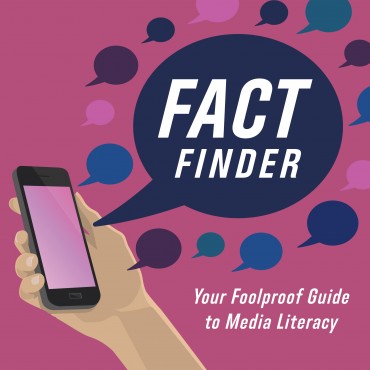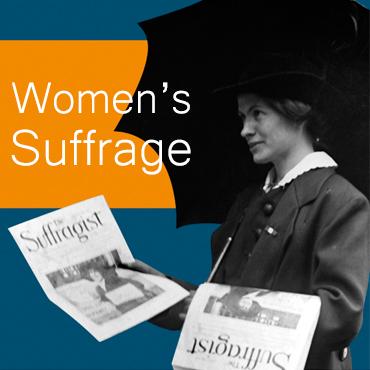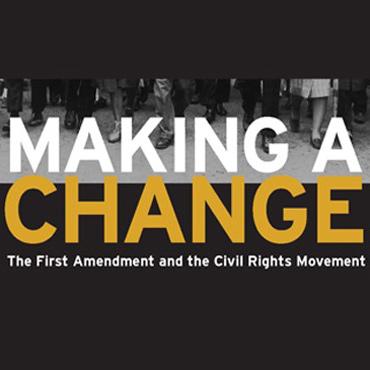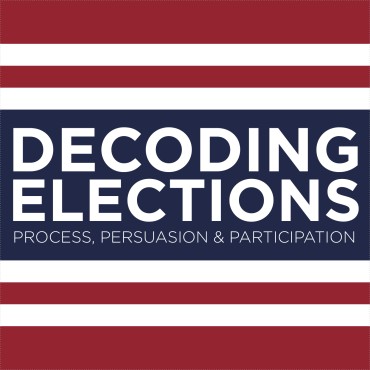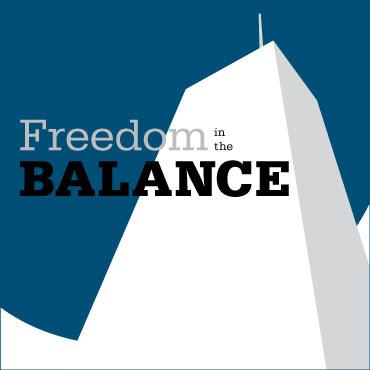Civil Rights Media Map - 1957
See how geography, social and political values, economics and history affected newspapers' exercise of freedom of press during the civil rights movement.
Get even more great free content!
This content contains copyrighted material that requires a free NewseumED account.
Registration is fast, easy, and comes with 100% free access to our vast collection of videos, artifacts, interactive content, and more.
NewseumED is provided as a free educational resource and contains copyrighted material. Registration is required for full access. Signing up is simple and free.
With a free NewseumED account, you can:
- Watch timely and informative videos
- Access expertly crafted lesson plans
- Download an array of classroom resources
- and much more!
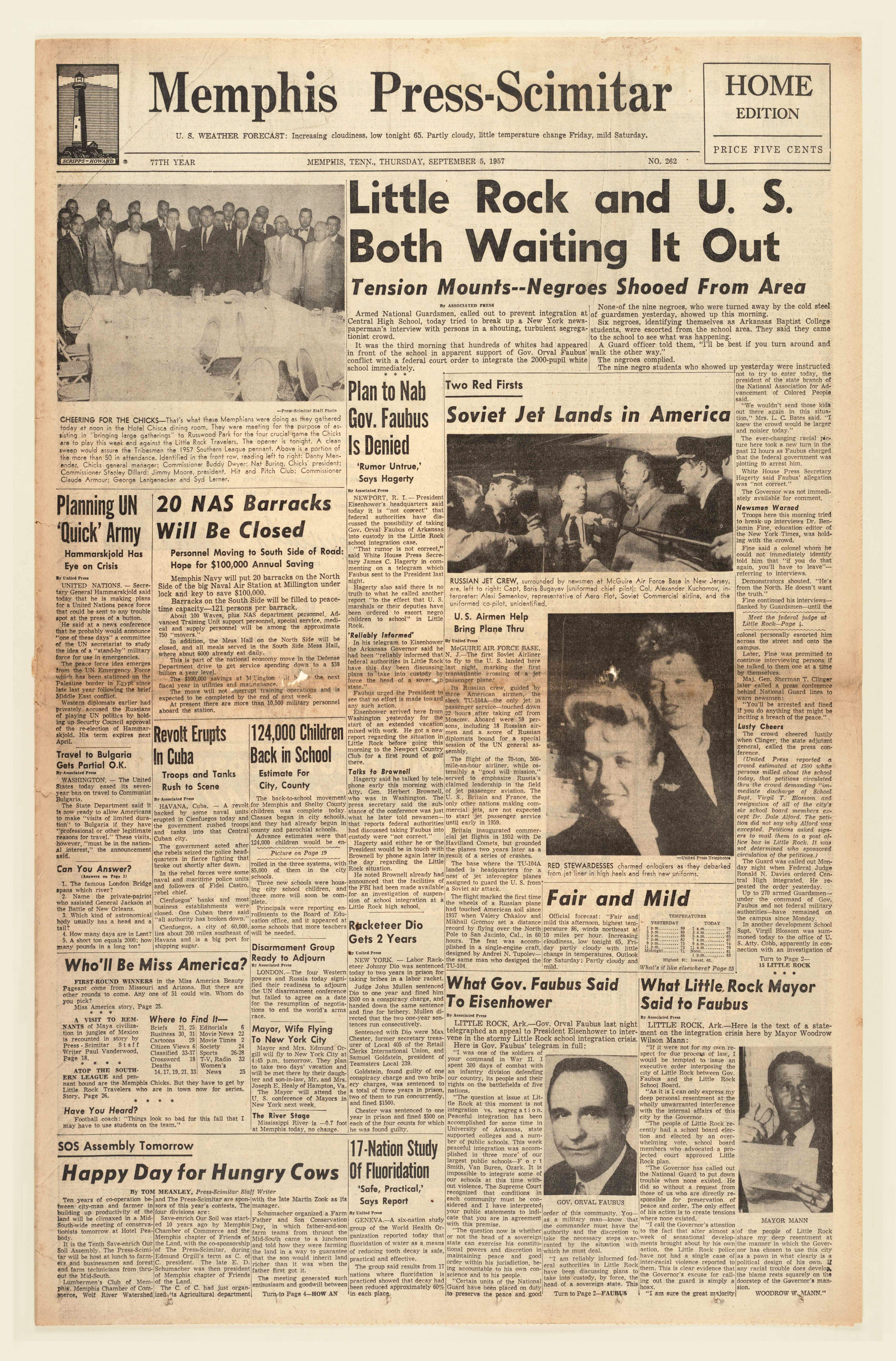
Memphis Press-Scimitar
The Memphis Press-Scimitar was an evening daily paper that ran from 1926 to 1983. The paper’s chief rival was the Memphis morning paper, The Commercial Appeal, which was owned by the same company. The Press-Scimitar was known for being more liberal than most in the South. The paper covered the African-American community before many white papers, and, unusually, used courtesy titles such as “Mr.” and “Mrs.” when referring to African Americans.
view larger image
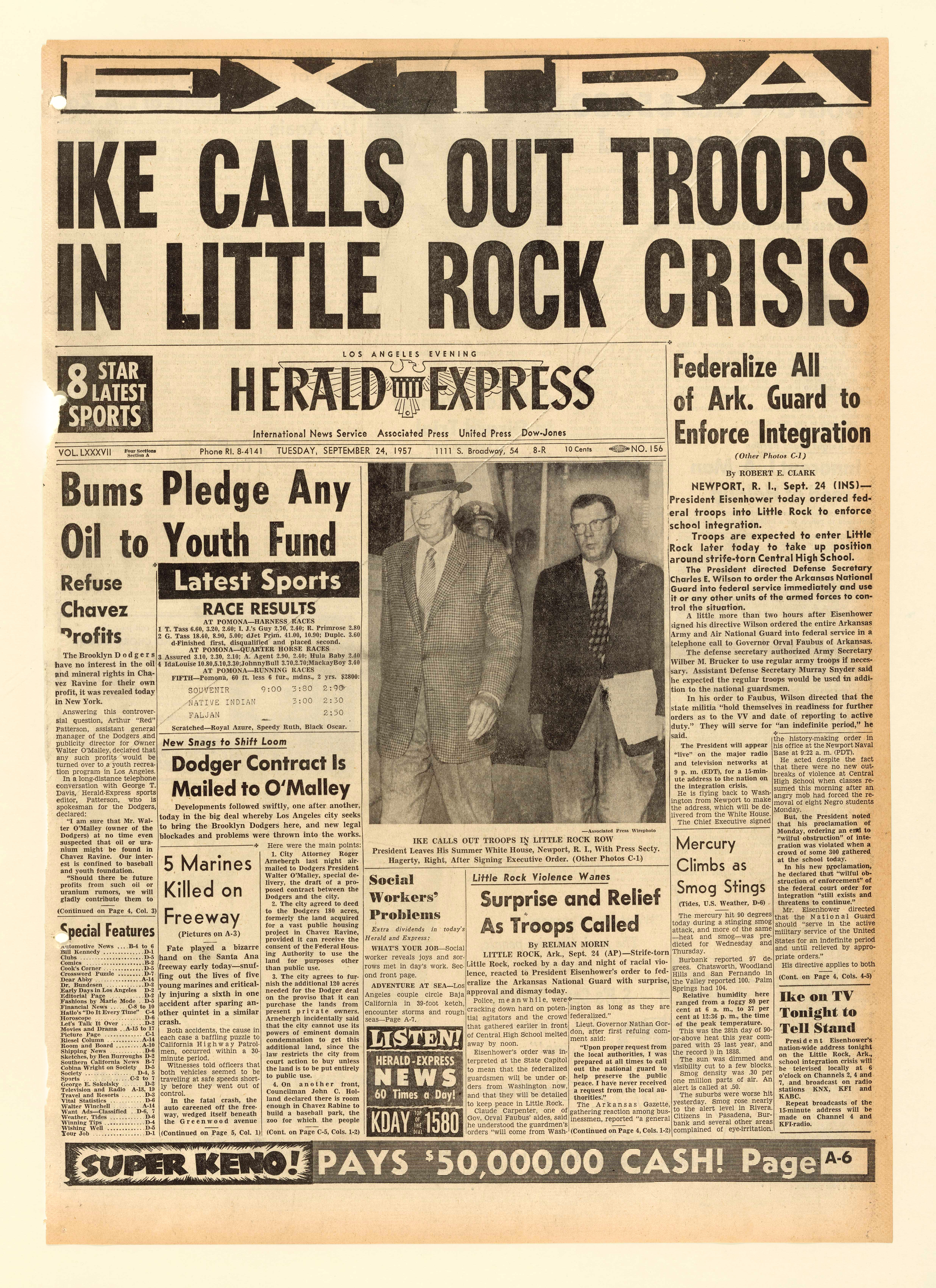
Los Angeles Evening Herald Express
In December 1931, newspaper tycoon William Randolph Hearst purchased and merged two Los Angeles, Calif., newspapers to form the Los Angeles Evening Herald Express. Hearst pushed for innovations in writing and layout design to draw in new audiences. Until the early 1970s, the paper served the majority white city (blacks made up 7 percent of the population in 1960). The newspaper ceased publication in 1989.
view larger image
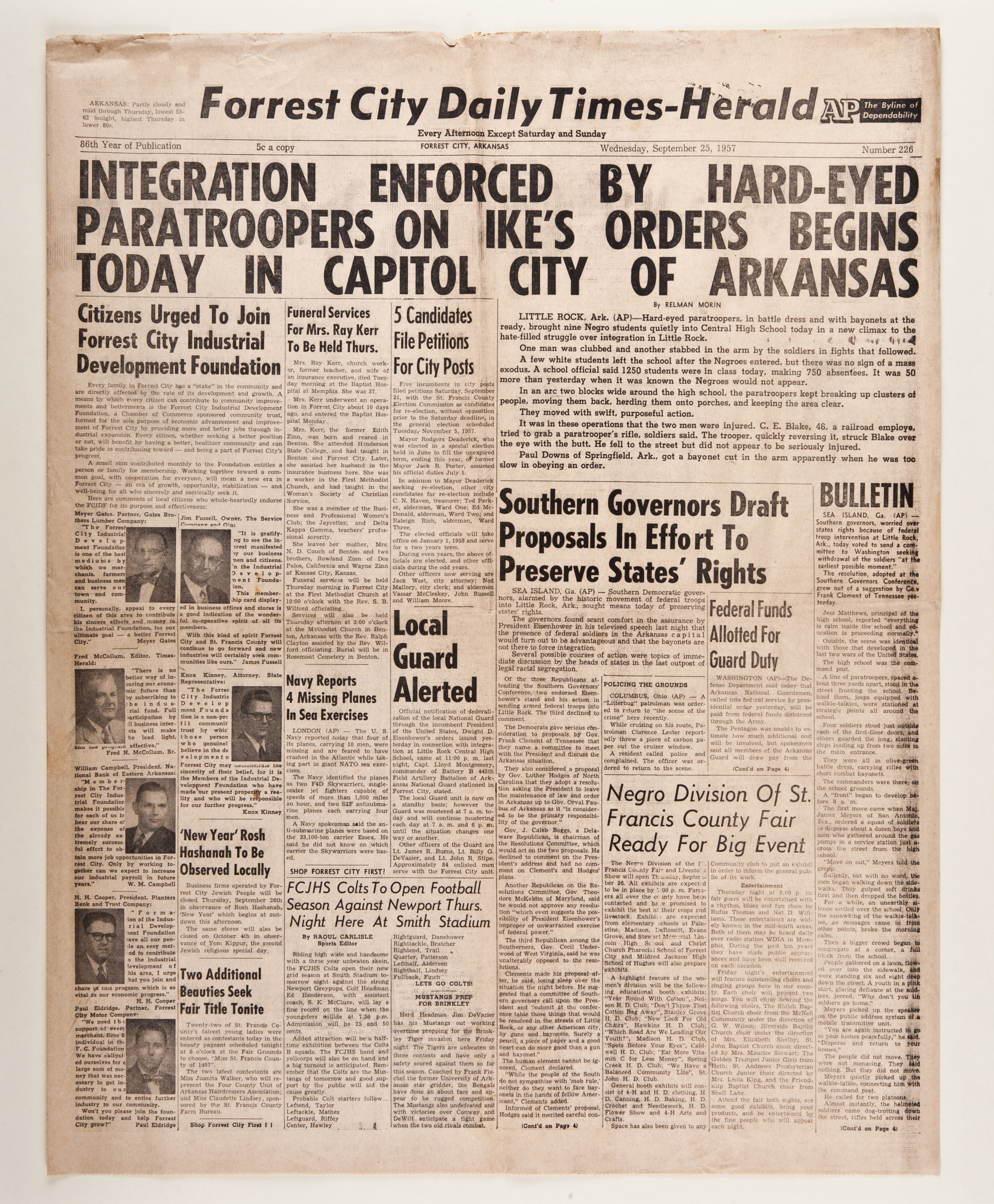
Forrest City Daily Times-Herald
The Forrest City Daily Times-Herald was a local afternoon newspaper that was delivered Monday through Friday. In the 1950s, the Times-Herald served a city that had an approximately equal number of black and white residents; about 30 percent of the population was illiterate. The paper printed under different names until 1984.
view larger image
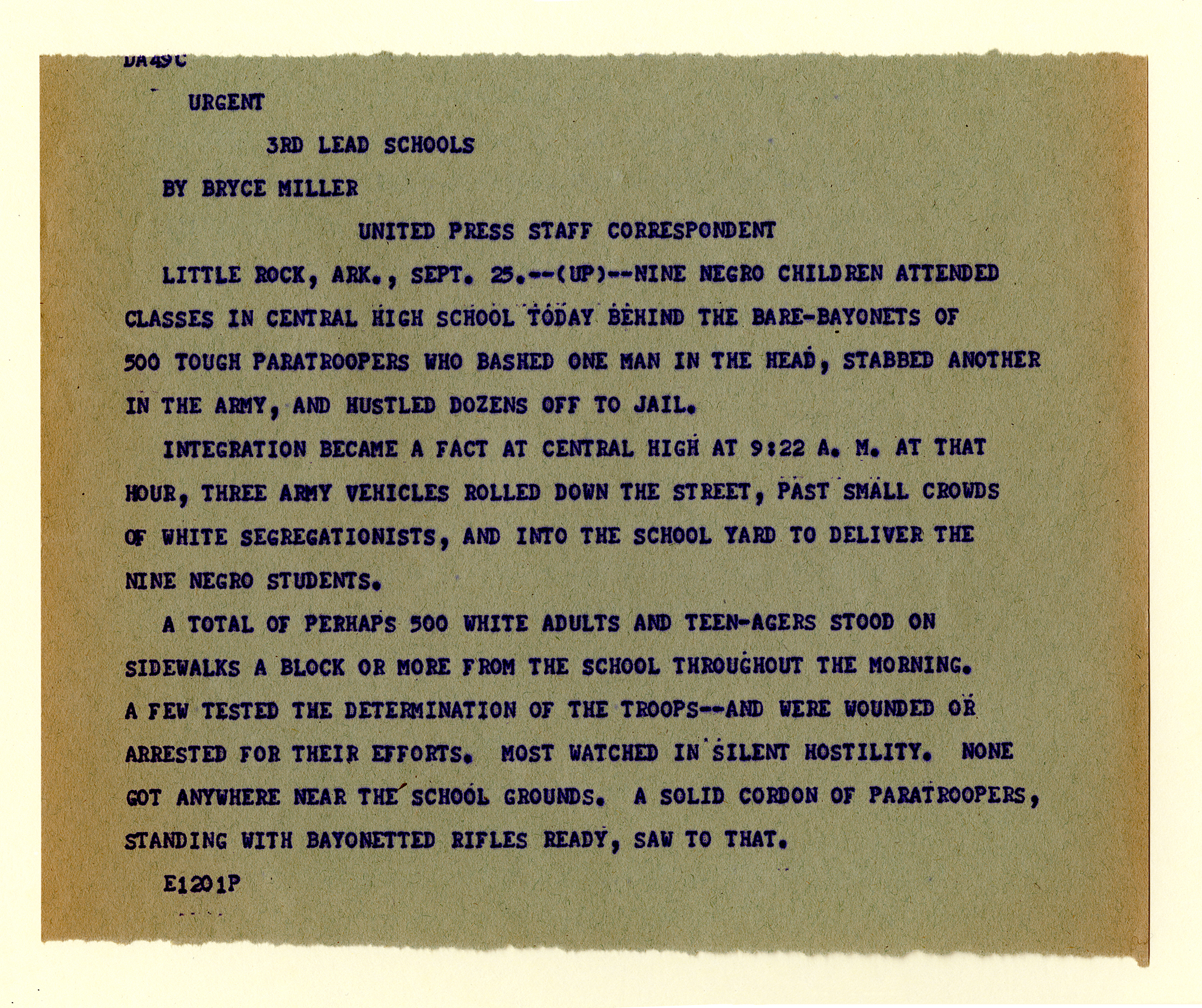
United Press
In 1907, newspaper publisher E.W. Scripps merged three regional news services to create the United Press (UP). Unlike its rival Associated Press, UP sold its stories to all newspapers, not just member organizations. Scripps criticized the Associated Press model, writing that he believed it would be bad for journalism in the United States “if there were one big news trust.” In the 1920s, the UP rapidly expanded its reach. The organization established bureaus in Europe, Asia and Latin America. In 1958, it merged with another wire service to become United Press International, or UPI, as it is known today. That same year, UPI launched a news wire radio network. In the 1980s and 1990s, UPI went into bankruptcy twice, but it recovered and continues to operate today.
view larger image
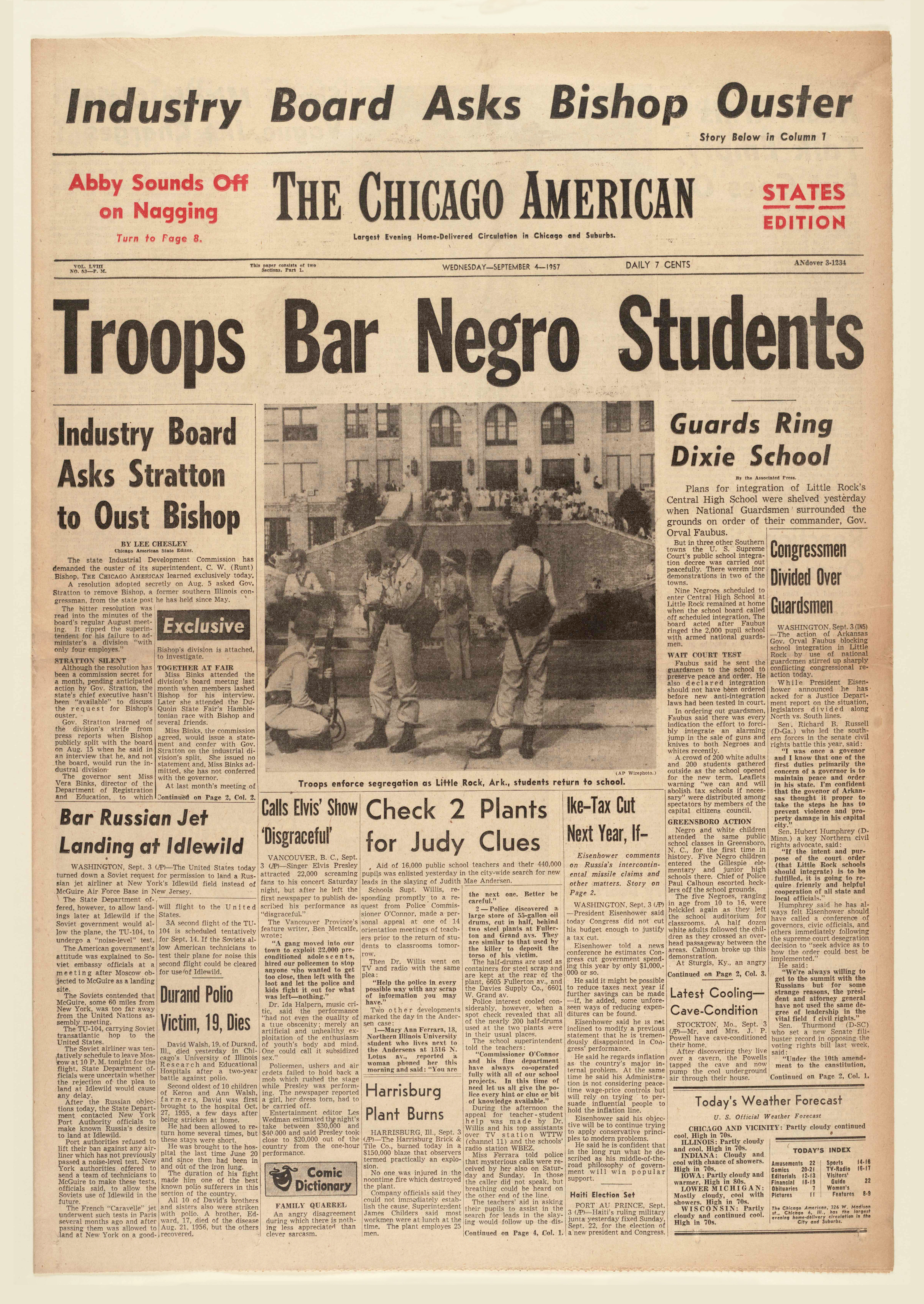
The Chicago American
The Chicago American was a Hearst Corporation evening newspaper founded in 1900. When the paper was first published, Chicago newspapers hired thugs to intimidate their rivals’ newsboys, including those selling the American. The American used sensationalist techniques, but its audience declined after World War II. The American ceased publication in 1974.
view larger image
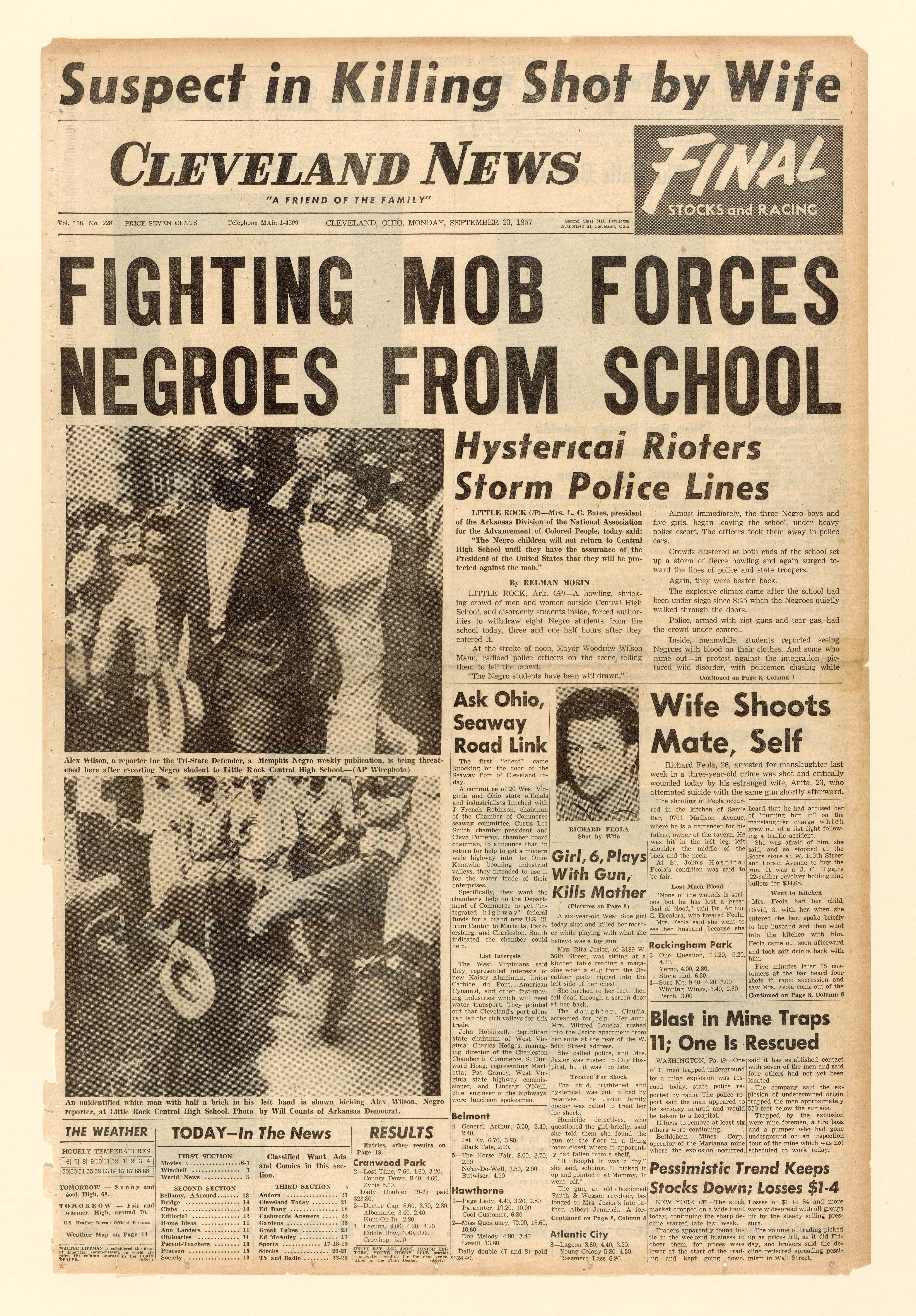
Cleveland News
The Cleveland News was founded in 1905 as an afternoon daily. The newspaper’s main competitor was the Cleveland Press, which ultimately acquired the News in 1960. During the News’s almost 60-year run, the paper was strongly Republican. During this time, the blacks accounted for 30 percent of the city’s population, in a state that was 90 percent white.
view larger image


